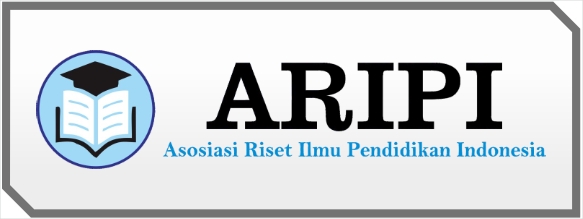Hubungan Penggunaan Video Pembelajaran Di Masa Pandemi Covid-19 Terhadap Hasil Belajar Fiqih Siswa Kelas V MI Rare Muchtary Tahun Pelajaran 2020/2021
DOI:
https://doi.org/10.53958/ft.v2i1.145Keywords:
Video Pembelajaran, Hasil BelajarAbstract
Learning video is a type of media used in learning activities by involving the senses of sight and sense of hearing in an activity process. Messages and information that can be channeled through this media can be in the form of verbal and nonverbal messages that rely on sight and hearing. The objectives of this study are, 1) To find out the relationship between the use of learning videos during the COVID-19 pandemic to the learning outcomes of fiqh students in class V at MI Rare Muchtary for the 2020/2021 academic year, 2) To find out how much the contribution of the use of learning videos during the COVID-19 pandemic to the fiqh learning outcomes of fifth grade students at MI Rare Muchtary for the 2020/2021 academic year. This research is a quantitative correlational study. The sample used in this study were 49 students. then the data were analyzed using the product moment correlation formula. The results showed that the relationship between the use of instructional videos on the fiqh learning outcomes of fifth grade students at MI Rare Muchtary was moderate or adequate. With the value of the correlation coefficient (r_xy) is 0.648. This means that Ho is rejected and Ha is accepted, so that the relationship between the use of learning videos and learning outcomes of fiqh is positive. 2) the instructional video variable (X) has a simultaneous contribution of 36.2% to the variable of student fiqh learning outcomes for class V (Y) and the remaining 63.8% is influenced by other factors not examined in this study.
References
Muhammad S. Sumantri, Pengantar Pendidikan, (Tangerang Selatan: Universitas Terbuka, 2015) hlm, 132
Republik Indonesia, UU RI No. 20 Tahun 2003, tentang Sistem Pendidikan Nasional, (Jakarta: Redaksi Sinar Grafika, 2009), h. 7 Al Quran dan Terjemahannya, (Jakarta: Departemen Agama, 2014)
HR. Ibnu Majah no. 224, dari sahabat Anas bin Malik radhiyallahu ‘anhu, dishahihkan Al Albani dalam Shahiih al-Jaami’ish Shaghiir no. 3913
Nur, I. (2013). Islamic Law on Gender Based Sexual Violence. AHKAM : Jurnal Ilmu Syariah, 13(1). https://doi.org/10.15408/ajis.v13i1.951
Sujianto, A. E., & Suryanto, T. (2018). Income differences, trade and Institutions: Empirical evidence form low and middle-income countries. Business and Economic Horizons, 14(2), 217–228. https://doi.org/10.15208/beh.2018.17
Anshor, A., & Muttaqin, M. (2020). Kebijakan Pemerintah Indonesia dalam Pencegahan Penyebaran Corona Virus Disease 2019 (Covid-19) Perspektif Maqashid Syari’ah. Al-Istinbath: Jurnal Hukum Islam, 5(2 November), 159-176. doi:http://dx.doi.org/10.29240/jhi.v5i2.1946
Sujianto, A. E. (2020). Macroeconomic Factors and Balance of Payment: Evidence from Indonesia. Industrial Engineering & Management Systems, 19(1), 266–272. https://doi.org/10.7232/iems.2020.19.1.266
Sujianto, A. E. & Mashudi. (2020). Maintain Sustainable Development Environment: Exports of Crude Petroleum, Coal, Natural Gas and Gross Domestic Product in Indonesia. IOP Conference Series: Earth and Environmental Science, 469(1), 012098. https://doi.org/10.1088/1755-1315/469/1/012098
SUJIANTO, A. E., PANTAS, P. E., MASHUDI, M., PAMBUDI, D. S., & NARMADITYA, B. S. (2020). Do Real Interest Rate, Gross Domestic Savings and Net Exports Matter in Economic Growth? Evidence from Indonesia. The Journal of Asian Finance, Economics and Business, 7(11), 127–135. https://doi.org/10.13106/JAFEB.2020.VOL7.NO11.127
SUPRIYANTO, A. S., SUJIANTO, A. E., & EKOWATI, V. M. (2020). Factors Affecting Innovative Work Behavior: Mediating Role of Knowledge Sharing and Job Crafting. The Journal of Asian Finance, Economics and Business, 7(11), 999–1007. https://doi.org/10.13106/JAFEB.2020.VOL7.NO11.999
Anshor, A., & Muttaqin, M. (2020). Kebijakan Pemerintah Indonesia dalam Pencegahan Penyebaran Corona Virus Disease 2019 (Covid-19) Perspektif Maqashid Syari’ah. Al-Istinbath: Jurnal Hukum Islam, 5(2 November), 159-176. doi:http://dx.doi.org/10.29240/jhi.v5i2.1946
Malik, M. K., & Subagiyo, R. (2020). Nilai Filosofi Doa Dalam Ekonomi Syariah. TSAQAFAH, 16(1), 163. https://doi.org/10.21111/tsaqafah.v16i1.4389
Nur, I., Abdul Wakhid, A., & Handayani, L. (2020). A Genealogical Analysis on the Concept and Development of Maqaṣid Syarī‘ah. AL-’ADALAH, 17(1), 1–30. https://doi.org/10.24042/adalah.v17i1.6211
Nur, I., & Muttaqin, M. N. (2020). Reformulating The Concept of Maṣlaḥah: From A Textual Confinement Towards A Logic Determination. Justicia Islamica, 17(1), 73-91. https://doi.org/10.21154/justicia.v17i1.1807
Nur, I., & Muttaqin, M. N. (2020). THE IMPACT OF ‘SELFIE’ PHENOMENON AMONG THE MILLENNIAL GENERATION. MIQOT: Jurnal Ilmu-Ilmu Keislaman, 44(2), 211. https://doi.org/10.30821/miqot.v44i2.710
Subagiyo, R., Djamaluddin, B., & Ahsan, M. (2020). Comparative Analysis of Customer Loyalty in Islamic and Conventional Banks: A Literature Review. Al-Uqud : Journal of Islamic Economics, 5(1), 97–118. https://doi.org/10.26740/al-uqud.v5n1.p97-118
Darmadi, Pengembangan dan Model Pembelajaran Dalam Dinamika Belajar Siswa, (Yogyakarta: Deepublish, 2017), h. 87
Omear Hamalik, Proses Belajar Mengajar, (Jakarta:Bumi Aksara, 2007), h. 30
Zainal Arifin. (2012). Penelitian Pendidikan Metode dan Paradigma Baru. Bandung: PT. Remaja Rosdakarya.
Sugiyono. Statistik untuk Penelitian.2017. Bandung: Alfabeta
Rukaesih A. Maolani dan Ucu Cahyani, Metodologi Penelitian Pendidikan, (Jakarta: Rajawali Pers, 2016), Cet. Ke-2, h. 132
Slameto, Belajar dan Faktor yang Mempengaruhinya, (Jakarta: Rineka Cipta, 2010), hal 54














